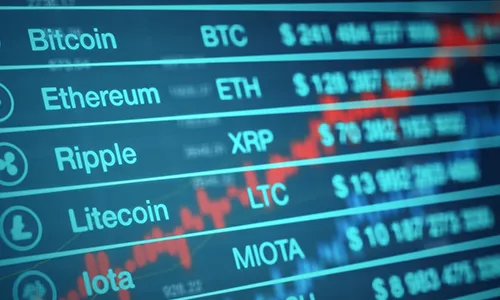An ATS is operated as a part of a broker-dealer, who is a member firm of the Financial Industry Regulatory Authority (“FINRA”). In addition, these are some other things you need to know:
To operate an ATS, a broker-dealer must file Form ATS with the Securities and Exchange Commission (“SEC” or “the Commission”). An ATS is essentially a securities exchange operating under an exemption to the exchange registration requirement found in Section 6 of the Securities Exchange Act of 1934 (“Exchange Act”). That exemption to exchange registration is found in Regulation ATS.
The member firm must file Form ATS with the SEC at least 20 days before the commencement of ATS operations. In addition, the broker-dealer must amend its Form ATS filing with the SEC at least 20 days before implementing any material changes to the operations of its ATS. Form ATS is actually a notice filing with the SEC but is not declared effective by the SEC. ATS operators work with the SEC staff and do not commence operations or implement material changes to those operations until the SEC staff is comfortable with Form ATS filing or amendments thereto.
Form ATS contains a number of Exhibits. Two all the exhibits involve detailed descriptions which causes most of the time and effort with the filing. These are Exhibits F &G.
Exhibit F
Exhibit F contains general information on the ATS’s manner of operations. Also included in the exhibit is information on:
• Procedures governing entry of orders into the system;
• The means of access to the system;
• Procedures governing execution, reporting, clearance, and settlement of transactions effected through the system;
• Procedures for ensuring subscriber compliance with system guidelines; and
• A copy of the subscriber manual and any other materials provided to subscribers.
This exhibit essentially details all the aspects and workings of the ATS. Here, all the various order types and priorities are described; it is better to have more types than fewer if you want to avoid having to amend your Form ATS before the introduction of a new order type. In addition, the ATS must have considered and be able to describe access to the system by non-subscribers, reporting of transactions, and oversight of subscriber for compliance. Lastly any subscriber manuals and subscription agreement must be provided to regulators.
Exhibit G
Exhibit G contains a brief description of the alternative trading system’s procedures for reviewing system capacity, security, and contingency planning procedures. It should be read in light of Regulation SCI – Systems Compliance and Integrity (“Regulation SCI”), which comes into play once the ATS reaches certain thresholds in its trading levels. Understandably the ATS may not reach the thresholds on day one but the ATS must keep Regulation SCI in mind, especially when operating in the segment of the capital markets pertaining to thinly traded securities.
Regulation SCI
The SEC adopted Regulation SCI and Form SCI to strengthen the technology infrastructure of the U.S. securities markets. Specifically, the rules under Regulations SCI are designed to:
• Reduce the occurrence of systems issues;
• Improve resiliency when systems problems do occur; and
• Enhance the Commission’s oversight and enforcement of securities market technology infrastructure.
Regulation SCI applies to a variety of entities including, but not limited to, ATSs that trade NMS and non-NMS stocks exceeding specified volume thresholds. Covered by the regulation are the systems that directly support any one of six key securities market functions:
• trading;
• clearance and settlement;
• order routing;
• market data;
• market regulation; and
• market surveillance.
The requirements of Regulation SCI apply once the ATS crosses the 5% threshold of a single symbol in non-NMS equity securities. At that time, the ATS shall have established written policies and procedures reasonably designed to ensure that its systems have levels of capacity, integrity, resiliency, and security, adequate to maintain the ATS’s operational capability and promote the maintenance of fair and orderly markets.
In addition, the ATS must establish, maintain, and enforce written policies and procedures reasonably designed to ensure that its SCI systems operate in a manner that complies with the Exchange Act and the rules and regulations thereunder, plus the entity’s rules and governing documents, as applicable. The policies and procedures must include, at a minimum:
• Testing of all systems and any changes to systems before implementation;
• A system of internal controls over changes to systems;
• A plan for assessments of the functionality of systems designed to detect systems compliance issues, including by responsible personnel and by personnel familiar with applicable provisions of the Exchange Act and the rules and regulations thereunder and the ATS’s rules and governing documents; and
• A plan of coordination and communication between regulatory and other personnel of the ATS, including by responsible personnel, regarding systems design, changes, testing, and controls designed to detect and prevent systems compliance issues.
Regulation SCI contains a whole panoply of other requirements that are too long and detailed to describe here. The additional requirements focus on obligations when systems events occur, when systems changes are made, business continuity plans, and recordkeeping relating to compliance. The regulation is very involved and only a portion of it is highlighted in the memorandum.
Before commencing operations, the ATS should strongly consider having its Regulation SCI policies and procedures in place, or at least in draft form. The ATS will have six months once the thresholds are crossed but the more work done on the front end before the requirements come into existence will assist in satisfying the Commission staff during its review the Form ATS, including Exhibit G. Effort on the front end will greatly minimize the scramble to have something in place before the lapse of six month.

Michael T. Dorsey, MCG Senior Consultant, brings a proven track record in the securities and trade industry advising executives of broker-dealers and investments on all regulatory aspects of their businesses including fixed-income trading and securities lending and alternative trading systems and Regulation ATS.






